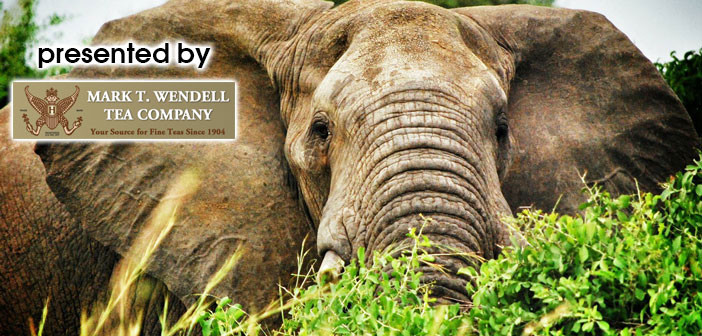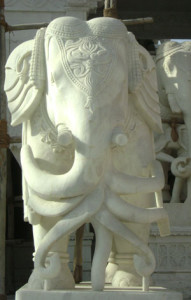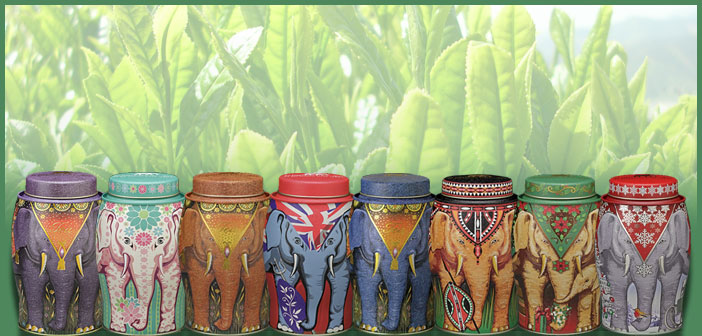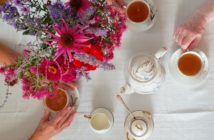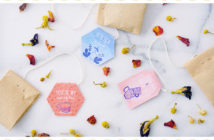Elephants throughout history have been revered in many tea-producing regions. Some tea plantations may even have a few of the animals as resident ‘workers’. They are useful in clearing and hauling debris when needed, though they tend to be a bit destructive if loose in the tea fields themselves. In the early days of tea farming, the shrubs were planted in triangular plots, which created a zig-zag pattern that allowed workers to escape the mighty feet of the elephants.
In prehistoric times, long before tea plantations existed, elephants walked just about every corner of the earth as the Wooly Mammoth. Images and likenesses of them can be found painted on the walls of caves worldwide. Now only native to Africa and Asia, elephants play a major role in the cultural beliefs of man.
In Indian mythology, a Hindu god, Indra, rode a pure white elephant with seven trunks and 4 tusks. This grand beast was called Airavata. He was known as the Elephant of the Clouds, the Fighting Elephant and the Brother of the Sun. In Thai lore, he was known by the name Erawan. Myth stated that elephants created the clouds, and today they are still closely associated with the sky and rain.
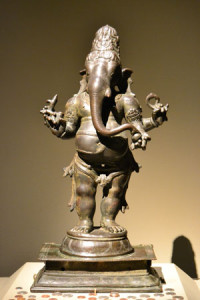
Ganesh, the Remover of Obstacles
Ganesh (Ganesha), a Hindu deity, is an elephant-headed creature known as the Remover of Obstacles. His likeness can be found everywhere in Indian culture. He is the God of Beginnings, and supposedly brings luck to those who possess a likeness of his image.
In Africa, many tales of lore suggest the elephant was once human. One such example is the Ashanti of Ghana. They believe elephants were formerly human chiefs. If they discover an elephant carcass, they give it a burial worthy of a tribal chief.
In feng shui, the orientation of elephant figurines has specific meanings. A pair of them placed at the entrance to the home brings good luck and protection. A Buddha laughing while riding an elephant, and holding children in his lap, can symbolize happiness and prosperity in a family. This can be situated in a den or any room where the family gathers together. An elephant rearing up on its hind legs, with trunk raised as if trumpeting, symbolizes power and protection. This is also good for placing at the front entrance to the home. A pair of elephants in the bedroom strengthens the love and bond between two people, while a mother elephant and baby show the bond between a mother and her children.
The symbolism of trunk positioning is also important. In Western cultures, the trunk facing up symbolizes good luck, while in the East, the trunk faces down for luck. A downward-facing trunk shows mourning in the West.
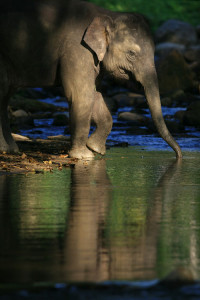 When it comes to appearance and ‘personality’, there are only a few differences between the Asian and African elephants.
When it comes to appearance and ‘personality’, there are only a few differences between the Asian and African elephants.
The Asian elephant has smaller ears and a greater curve to the spine than the African species, and includes several sub-species. These include the Indian elephant, Sumatran elephant, Sri-Lanka elephant, and Borneo elephant, with the Indian sub-species being the most widespread. They all are inherently friendly toward humans, a trait that may have become their downfall. Humans are slowly eradicating the Asian elephant population through destruction of their natural habitat, as well as poaching for their tusks of pure ivory. Only males in the Asian species grow these tusks. Conservation efforts are currently underway to stop the illegal slaughtering of these gentle giants, and to reintroduce their migration routes, away from human contact.
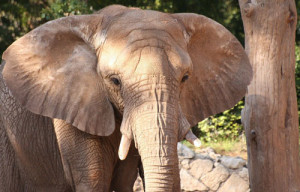 Its African cousins are the largest animals on this planet, at least on land. They have large ears that radiate heat to help keep them cool in the hot, arid climate. They reach up to 13 feet in height at the shoulders, and can weigh as much as 14,000 pounds! Both the males and females of this species possess the highly-coveted ivory tusks, and they are also in danger of extinction due to poachers.
Its African cousins are the largest animals on this planet, at least on land. They have large ears that radiate heat to help keep them cool in the hot, arid climate. They reach up to 13 feet in height at the shoulders, and can weigh as much as 14,000 pounds! Both the males and females of this species possess the highly-coveted ivory tusks, and they are also in danger of extinction due to poachers.
An elephant’s trunk is not for drinking, as many may believe. Instead, it is used to draw liquid, then spray it either into the mouth or over the body. It also functions as defense against attack, as well as a sign of affection, such as when a mother uses it to gently stroke her baby’s face.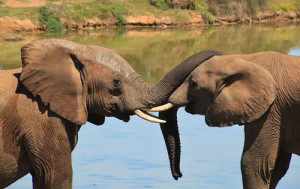
Elephants are an important part of the ecosystem as well. Their migratory nature helps to spread the growth of vegetation necessary for survival, for human and animal alike, with the process of eating and eliminating. Without these regal giants roaming the earth, the effects on the surrounding lands, as well as wildlife populations, could be catastrophic.
Do you love elephants? Enter to win 3 of these Williamson Elephant Tea Caddies from Mark T. Wendell Tea Company! Click here to enter your name and email address. One winner will be chosen randomly from entries received.
Terms & Conditions: Must be 18 years of age to enter and a legal resident of United States or Canada. No purchase necessary. Limit one entry per person. Contest ends September 12, 2014/ midnight EST. Winner will be notified by email, at which time a valid U.S. or Canada address must be supplied by winner in order to receive prize.
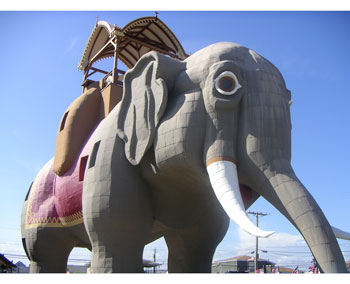 Did you know?
Did you know?
Elephants are even present in architecture! Lucy the Elephant, built in 1881 and located in Margate, New Jersey, boasts 6 stories and multiple rooms. The legs are actually stairwells. The Save Lucy Committee was formed in 1970 to preserve the structure, and to ensure continuing maintenance so future generations can enjoy this historic landmark.
“Regal Giants”
was presented by Mark T. Wendell Tea Company.

